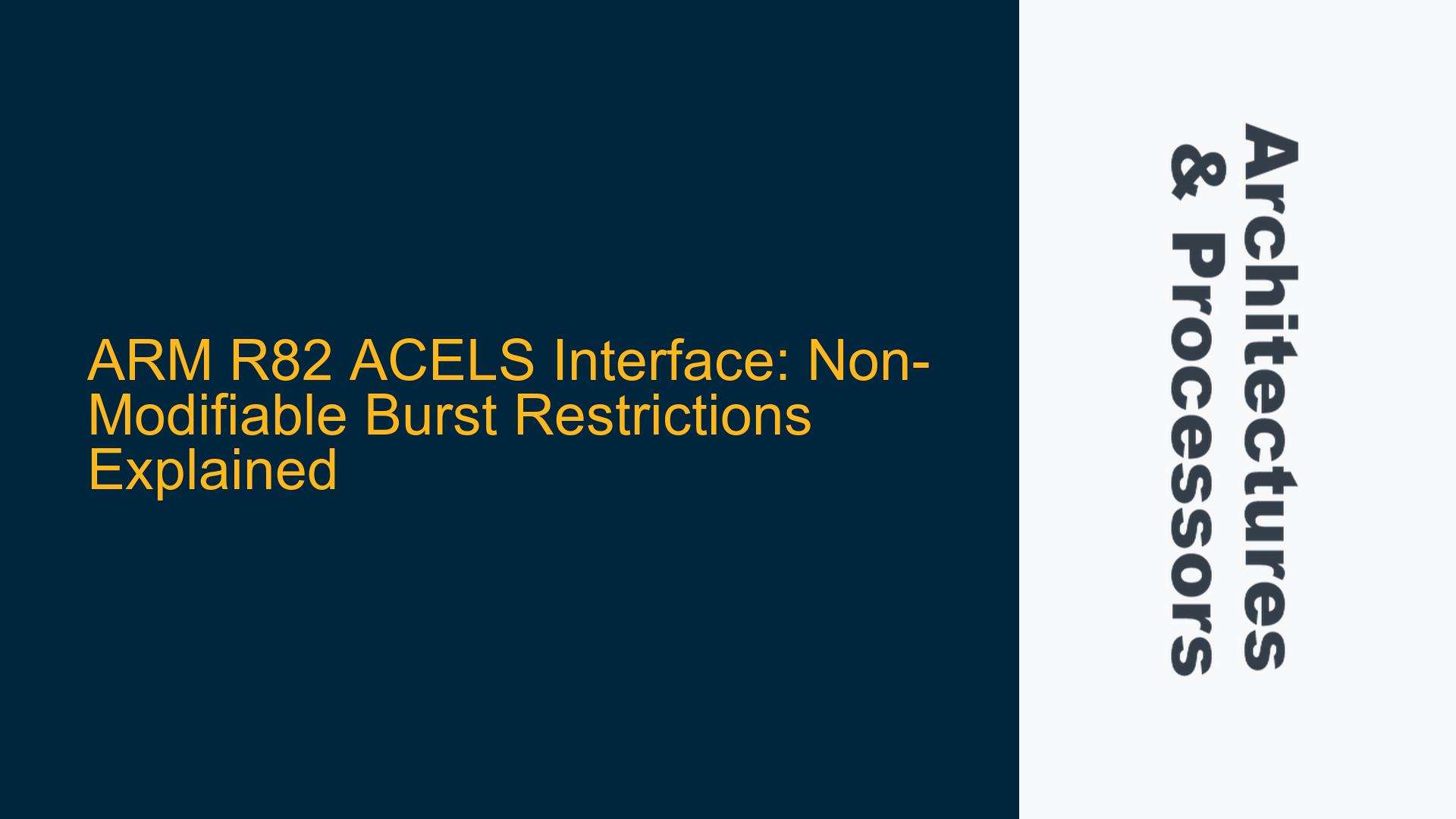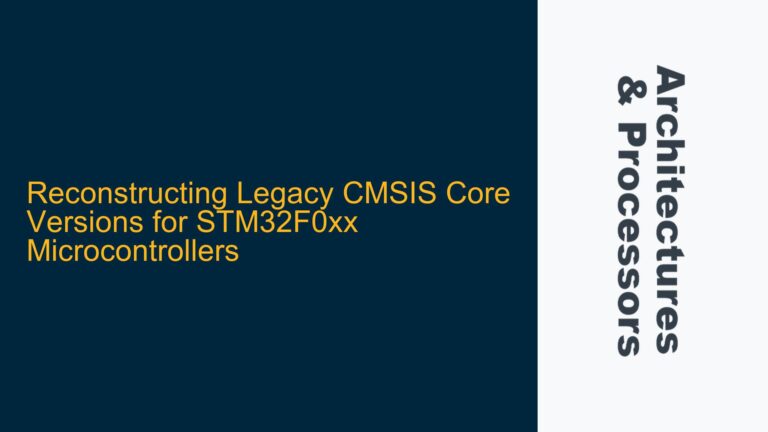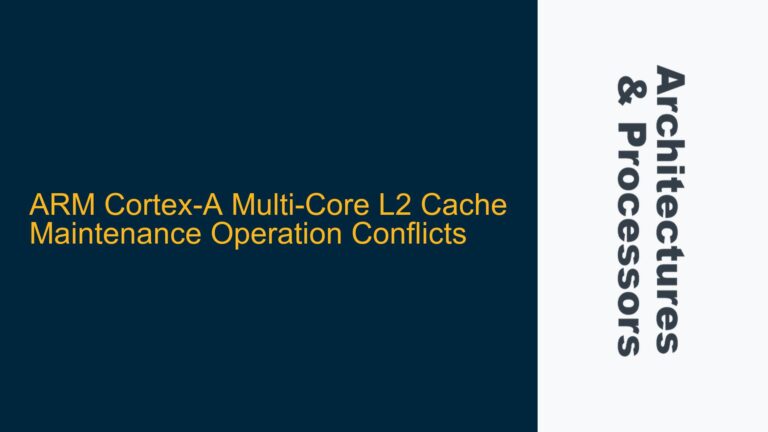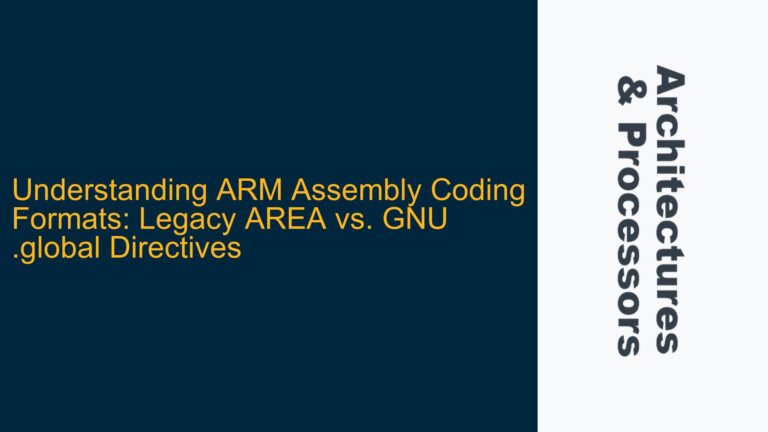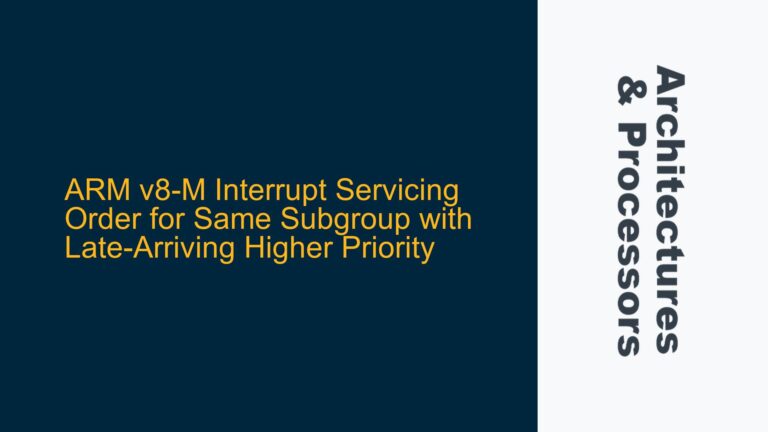ARM R82 ACELS Interface and Non-Modifiable Burst Prohibition
The ARM R82 processor, a high-performance core designed for real-time and embedded applications, features the ACELS (AMBA Coherent Extensible Link System) interface. This interface is critical for ensuring efficient communication between the processor and other system components, such as memory controllers, accelerators, and peripherals. One notable restriction in the ACELS interface is the prohibition of non-modifiable bursts. This restriction has significant implications for system design and performance optimization.
Non-modifiable bursts refer to memory transactions where the burst length and type cannot be altered once initiated. In many ARM architectures, bursts are used to optimize memory access patterns by transferring multiple data units in a single transaction. However, the R82’s ACELS interface explicitly disallows non-modifiable bursts, requiring all bursts to be modifiable. This design choice is rooted in the R82’s architecture and its focus on flexibility, coherency, and real-time performance.
The prohibition of non-modifiable bursts in the ACELS interface is not arbitrary but is tied to the R82’s internal mechanisms for handling memory transactions. The ACELS interface is designed to support advanced features such as cache coherency, low-latency communication, and dynamic burst length adjustment. Non-modifiable bursts, by their nature, limit the system’s ability to adapt to changing conditions, such as cache line fills, evictions, or real-time task requirements. By enforcing modifiable bursts, the R82 ensures that the system can dynamically adjust memory transactions to maintain optimal performance and coherency.
Understanding this restriction requires a deep dive into the R82’s memory subsystem, the role of the ACELS interface, and the implications of modifiable versus non-modifiable bursts. This analysis will explore the technical reasons behind the prohibition, its impact on system design, and practical considerations for developers working with the R82.
Memory Subsystem Constraints and Coherency Requirements
The prohibition of non-modifiable bursts in the ARM R82’s ACELS interface is primarily driven by the memory subsystem’s constraints and the processor’s coherency requirements. The R82 is designed to operate in complex, multi-core systems where maintaining cache coherency and minimizing latency are paramount. The ACELS interface plays a central role in achieving these goals by facilitating efficient communication between the processor and other system components.
One of the key challenges in such systems is managing cache coherency. The R82 employs a distributed coherency protocol that relies on the ACELS interface to propagate coherency transactions across the system. Non-modifiable bursts can interfere with this protocol by introducing rigid transaction patterns that do not align with the dynamic nature of cache coherency operations. For example, a non-modifiable burst might lock the memory bus for an extended period, preventing other cores or agents from accessing critical resources. This can lead to coherency violations, increased latency, and reduced system performance.
Another factor is the R82’s focus on real-time performance. In real-time systems, predictability and responsiveness are critical. Non-modifiable bursts can introduce unpredictability by forcing the system to adhere to fixed transaction patterns, even when the underlying conditions change. For instance, a real-time task might require immediate access to a memory region, but a non-modifiable burst could delay this access, violating timing constraints. By requiring modifiable bursts, the R82 ensures that the system can adapt to real-time demands without compromising performance.
The memory subsystem’s constraints also play a role. The R82’s memory controller is optimized for flexible transaction handling, allowing it to prioritize critical operations and adjust burst lengths based on system conditions. Non-modifiable bursts limit this flexibility, potentially leading to inefficient memory utilization and increased contention. For example, a non-modifiable burst might transfer more data than necessary, wasting bandwidth and increasing power consumption. Modifiable bursts, on the other hand, enable the memory controller to optimize transactions based on actual requirements, improving overall system efficiency.
Implementing Modifiable Bursts and System Optimization
To comply with the ARM R82’s prohibition of non-modifiable bursts, developers must implement modifiable bursts in their system designs. This involves understanding the ACELS interface’s requirements, configuring the memory controller appropriately, and optimizing software to take advantage of modifiable bursts.
The first step is to configure the memory controller to support modifiable bursts. This typically involves setting appropriate parameters in the controller’s configuration registers, such as burst length limits, transaction priorities, and coherency settings. Developers must also ensure that the memory controller is capable of dynamically adjusting burst lengths based on system conditions. This might require custom logic or firmware to handle edge cases, such as cache line fills or evictions.
Software optimization is equally important. Developers must design their software to generate memory transactions that align with the ACELS interface’s requirements. This includes using appropriate data structures, minimizing unnecessary memory accesses, and leveraging hardware features such as prefetching and caching. For example, software can use scatter-gather DMA (Direct Memory Access) to transfer data in flexible, modifiable bursts, reducing the overhead associated with fixed-length transactions.
Another consideration is system-level optimization. The R82’s ACELS interface is designed to work seamlessly with other system components, such as interconnects, accelerators, and peripherals. Developers must ensure that these components are also configured to support modifiable bursts. This might involve adjusting interconnect settings, optimizing accelerator interfaces, or modifying peripheral drivers. By aligning all system components with the ACELS interface’s requirements, developers can maximize performance and minimize latency.
Finally, developers must thoroughly test their system to ensure compliance with the R82’s burst requirements. This includes functional testing to verify that modifiable bursts are correctly implemented, performance testing to measure the impact on system efficiency, and stress testing to identify potential edge cases. Tools such as ARM’s DS-5 Development Studio can be invaluable for this purpose, providing detailed insights into system behavior and performance.
In conclusion, the ARM R82’s prohibition of non-modifiable bursts in the ACELS interface is a deliberate design choice that reflects the processor’s focus on flexibility, coherency, and real-time performance. By understanding the underlying reasons for this restriction and implementing appropriate solutions, developers can optimize their systems for maximum efficiency and reliability. Whether configuring the memory controller, optimizing software, or aligning system components, careful attention to the ACELS interface’s requirements is essential for success.
